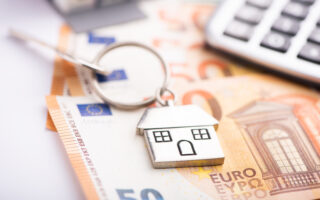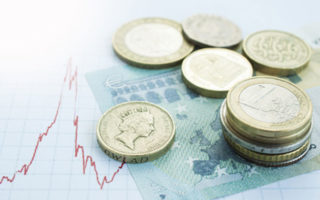From Evian to Perrier: The Origins of France’s Beloved Mineral Waters
Feature
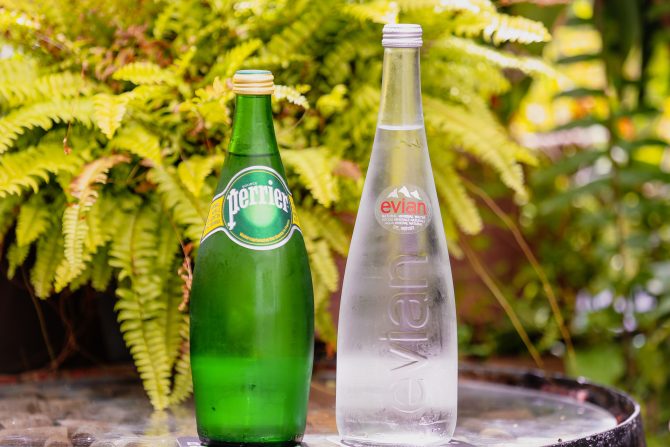
FrenchEntrée contributor Denyse Betts takes us on a journey to uncover the secrets of France’s second-most famous drink – mineral water!
France is blessed with an incredible number of natural water sources. Today, a total of 152 mineral or natural spring water sources are owned and operated by private companies only too happy to quench the thirst of the French, who consume around 135 liters of bottled water per year. France can boast of being a leader in both production and consumption. However, pumping and collecting water emerging from the depths of the earth is a long and complex affair. There is always the possibility of pumping water from a well, but natural spring water has to come from a unique source, and in the case of mineral water, it must possess the same mineral content from one bottle to the other.
The tradition of drinking mineral water was already present some 2000 years ago when the Romans established spas in the then-occupied Gaul. Roman emperors were fond of warm baths at home, and that tradition followed them in their conquests. These waters were also considered a healthy drink and appreciated for their medicinal properties.
The origins of France’s water sources
Some 50,000 years ago, large swaths of the earth were covered by glaciers. The earth eventually warmed up, and as the ice cap melted, the water began its journey into the bowels of the earth. It trickled and seeped through the cracks of porous rock, working its way downwards, and, depending on the nature of the rock strata, enriched itself along the way with a cornucopia of minerals and, at times, carbon dioxide, just enough to make it bubbly. Today, in order to sell a consistent product, bottling plants have the gas drawn off before reinjecting it.
After years of peregrination, the water eventually settled into vast underground basins or aquifers. Sealed off from the outside world, it was able to maintain its purity and mineral content, a living matter rife with bacteria just like yogurt, waiting to be discovered, tapped, and savored. Nowadays, aquifers “feed” on rain and melting snow. What happens next is quite fascinating. Once the aquifers become full to the brim, the water is pressured into traveling once again, this time working its way upwards. It can take several years for it to reach the surface, and when it does and finally gushes out, a natural spring is born.
What makes a “mineral water”?
In France, water for drinking is classified into three categories, “eau de table” (table water), “eau de source” (spring water), and “eau minérale naturelle” (natural mineral water). Natural mineral water, at the time, was only valued for its therapeutic qualities until modern medical breakthroughs changed all of that.
The French love to regulate everything and water is no exception. Natural mineral water must never undergo any type of treatment, and in order to ensure its innocuity, the first decree related to mineral water was issued in 1781. By 1856, a law was enacted, and after careful testing, a source could be declared “d’intérêt public,” which meant it could boast of being beneficial to our health. People suffering from kidney stones, poor digestion, or skin diseases flocked to spas and their miraculous waters. Nowadays, highly mineralized water can still be drunk for therapeutic purposes, but only at a spa and under the supervision of a doctor.
The reason for buying this type of water in a store is precisely for its mineral content. “Eauxminérales” have a consistent mineral profile, and the four minerals of interest are magnesium, calcium, potassium, and sodium. Magnesium helps maintain, among other things, normal nerve and muscle function, and plays a role in glucose levels, while calcium prevents bone loss, and keeps your teeth strong and healthy. Potassium, on the other hand, can regulate fluid levels and prevent kidney stones, while sodium will help maintain your blood pressure and is necessary for an overall healthy body. It is interesting to note that, until the fifties, mineral water was sold exclusively in pharmacies. Nowadays, bottled mineral water sold in supermarkets can be drunk in unlimited amounts, but if you have health issues, it is advisable to consult with your doctor to prevent mishaps. Since the mineral content clearly appears on each and every bottle, it is easy to choose a mineral water that has the right quantity of minerals that work for you. Case in point: Hepar has a very high magnesium content, while Vichy and StYorre are very rich in sodium.
Bottled “eaux de source” are also subject to government regulation. They, too, must be bottled at the source and devoid of any treatment. While they cannot be billed as having any beneficial health properties, they may contain traces of minerals. “Les eaux de source” are considered a refreshing, soothing drink; nothing more, nothing less.
Mineral water is strictly controlled by the French Ministry of Health, the Academy of Medicine, and also the Ministry of Mines. In order to be considered “d’intérêt public”, it must be bottled at source, and only from one single source, and must not be treated in any way, except when removing its iron content. The Ministry of Mines foresees the maximum daily withdrawal to ensure the water table is not depleted, such as what is now happening in Vittel at one of its sources. As an additional precaution, sources must also be surrounded by a secured perimeter of 4 to 6 kilometers. Called an impluvium, it protects its catchment from any form of contamination or tampering.
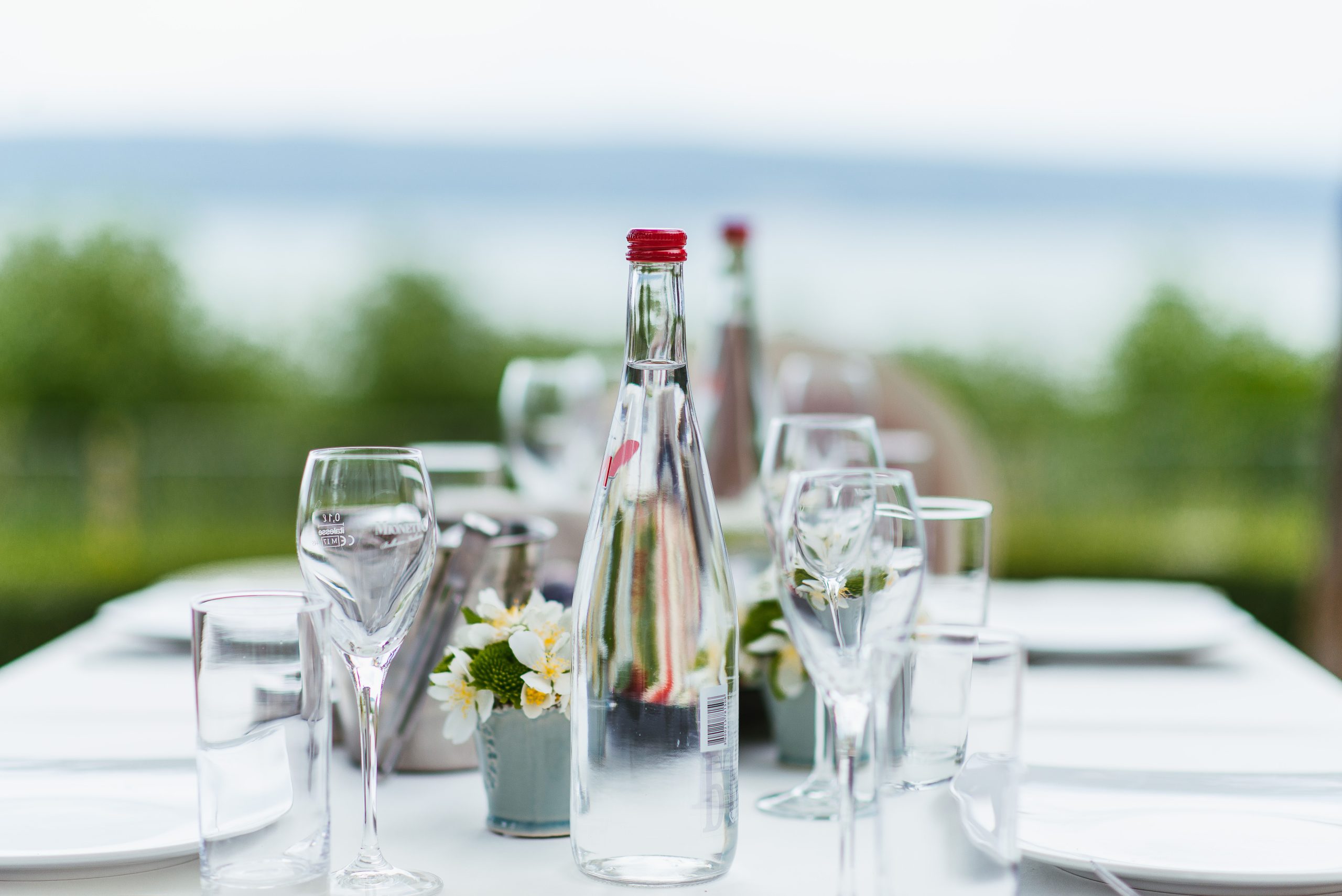
France’s mineral water industry
Nowadays, two food giants own and distribute the most famous mineral waters. French Danone and Swiss Nestlé are behind the commercial exploitation of these sources worldwide. Groupe Alma, a relative newcomer, has a bestseller with Cristaline, an “eau de source” which has cornered the low-cost market. Groupe Alma is today’s major competitor in the industry. It owns and operates some sixteen natural spring water sources across France, all close to large cities with their huge supermarkets. The company does not rely on expensive advertising and does not export, therefore reducing costs to a minimum.
The French are the undisputed masters at bottling, shipping, and marketing to the point that drinking a glass of bottled water is close to experiencing an epicurean moment. There is a strong trend towards pedigreed bottled spring waters with a story to tell. Just like wine, they are identified by their “terroir” (in this case their geology), and appreciated for their own distinctive taste. Depending on their mineral content, they are known to be refreshing, salty, or full-bodied. A bottle of water coupled with a bottle of wine is now essential to any French gourmet meal.
In the world of bottled waters, competition is fierce and image is everything. Advertising is ever present on television, billboards, and during sporting events such as the Tour de France and Rolland Garros. While Evian, with its very small mineral content, carries a reputation as a water fit for babies, Perrier is often associated with young professional urbanites. Volvic, on the other hand, comes from a unique environment: the volcanos in the Massif Central, a wild and remote landscape that gives it an image of raw nature and the great outdoors. Badoit, known for its light fizziness, is still a great favorite in restaurants, while Wattwiller is known for its purity. In their quest to gain new customers, a majority of bottlers have now succumbed to the latest trend of adding fruit flavors. Bottled mineral waters laced with lemon, strawberry, watermelon, and pink grapefruit can now be found alongside the classic bottle. There is also a high-end trend in big cities and restaurants, where water in fancy glass bottles can fetch atrocious prices.
A rich history
Most mineral water sources are found deeply embedded in mountainous areas such as the Alps, the Vosges, the Massif Central, and the Pyrénées. Their history is as diverse as their territory, but Evian and Perrier are still the most famous. Commercial exploitation began in Evian on Lake Geneva in 1829 when the water was first sold in earthenware jugs. The discovery of the spring goes back to 1790 when a nobleman from the Auvergne, the Marquis de Lessert, took a liking to the “Fontaine Sainte-Catherine”, one of several found in the area. The Marquis had kidney stones and found the water so soothing that he kept coming back for more. Years later, King Victor Emmanuel of Savoy authorized the establishment of Société des Eaux Minérales d’Evian. Thermal baths were built with a grand hotel to house the “curistes”. The source, still known as the source Cachat, was owned at one time by a Monsieur Cachat and was declared “d’intérêt public” in 1926. The citizens of Evian have free access to the water and are often seen waiting in line with an empty bottle at one of the municipal taps. Evian produces 6 million bottles per day, and their latest revenues amount to a mindboggling 1 471 196 882 Euros.
Perrier, an iconic brand since 1863, is the world’s best-known sparkling mineral water. Called the champagne of table waters, it is as French as the Eiffel Tower. It is believed that Hannibal took to the waters in the town of Vergèze, in the Languedoc, on his way to Rome in 218BC. In 1894, Dr. Louis Perrier began selling the water. He found a business partner, St John Harmsworth, who devoted his life to the Source Perrier. The victim of a car accident, he was left paralyzed from the waist down. He got the idea for the unique shape of the Perrier bottle from Indian clubs he used when exercising to regain strength. When he died, a Parisian named Gustave Leven acquired Perrier and subsequently turned it into the powerhouse it is today. Through extravagant adverts and savvy designs, Perrier remains the stylish alternative to the ubiquitous martini at lunch, with zero calories, as with any water, to boot.
The future of French mineral water
The connexion between water and health is now established in the minds of consumers, but the industry cannot rest on its laurels. While it registers record profits, the industry suffers from an environmental image. Large-scale production of plastic bottles has serious consequences on the environment. Now committed to reducing its carbon footprint, the industry has turned to PET, polyethylene terephthalate, which is globally recognized as safe, non-toxic, lightweight, and 100% recyclable. Unfortunately, the bottles still end up in incinerators or landfill when not in rivers and oceans. Glass is even more expensive to produce and, therefore, not an option. Tap water, although safe, has its own issues. The problem is universal and will have to be addressed by lawmakers and citizens alike in the near future.
Meanwhile, based in Brussels, the European Federation of Bottled Waters pledges to collect 90% of all PET bottles by 2025 while investing in research on non-fossil-based plastic material.
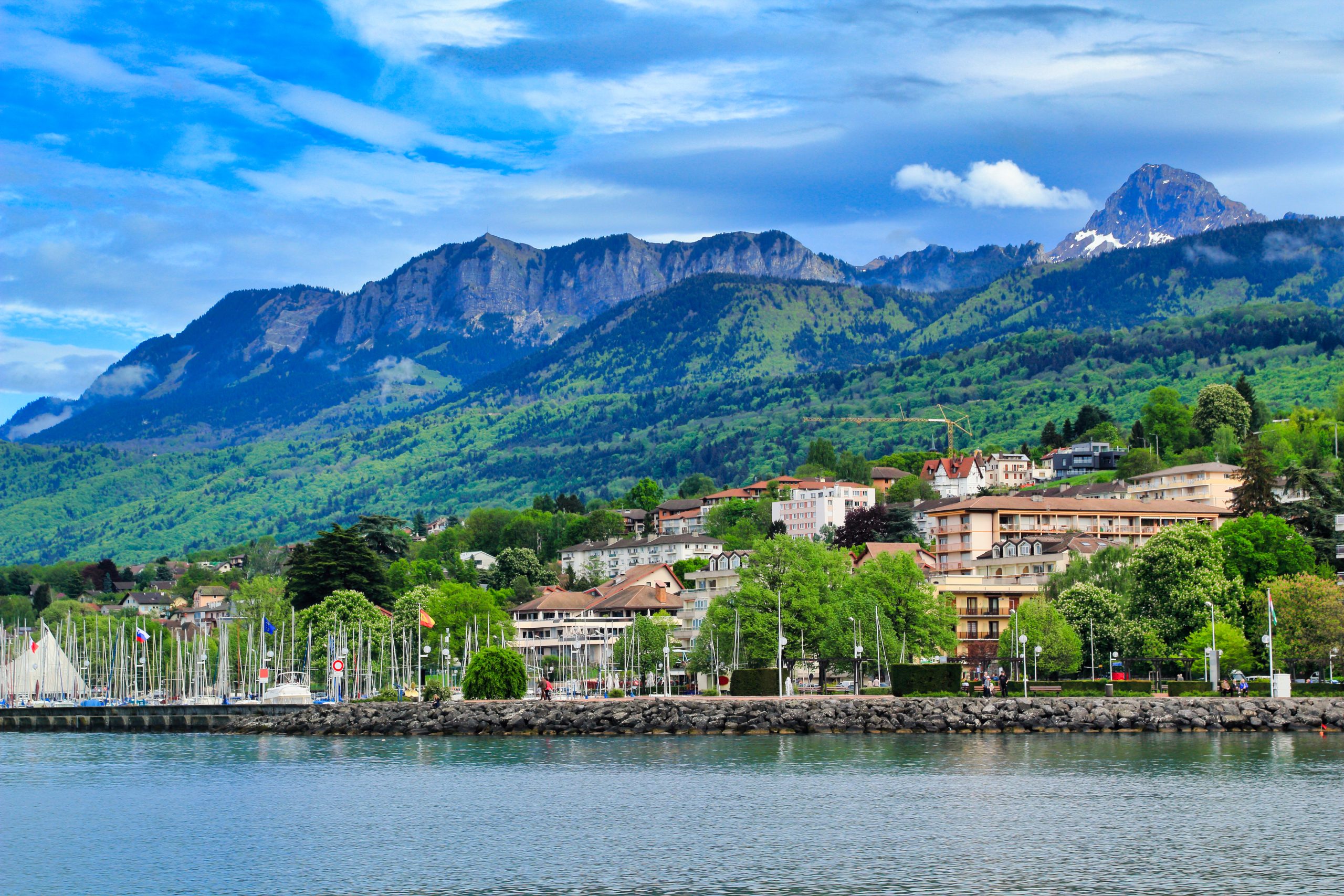
Evian-les-Bains, France
Inspired by this article?
Browse our properties for sale in the French Alps.
Share to: Facebook Twitter LinkedIn Email
By Denyse Betts
Leave a reply
Your email address will not be published. Required fields are marked *


